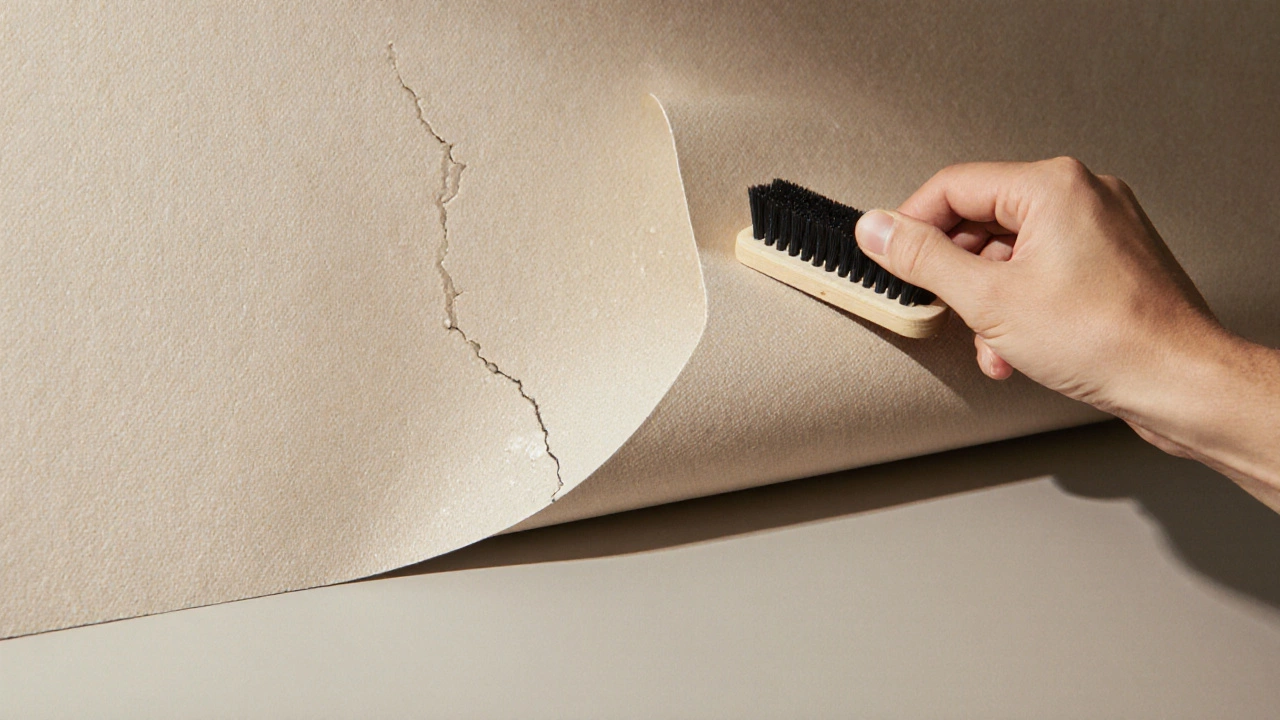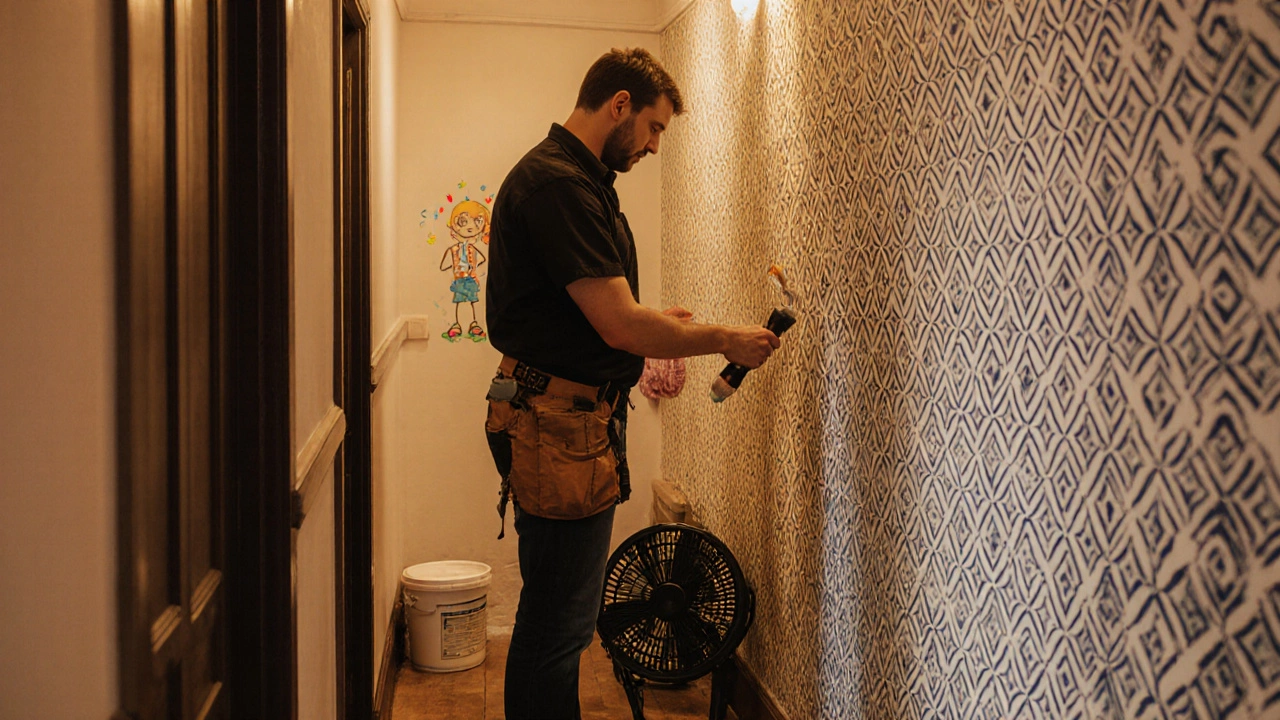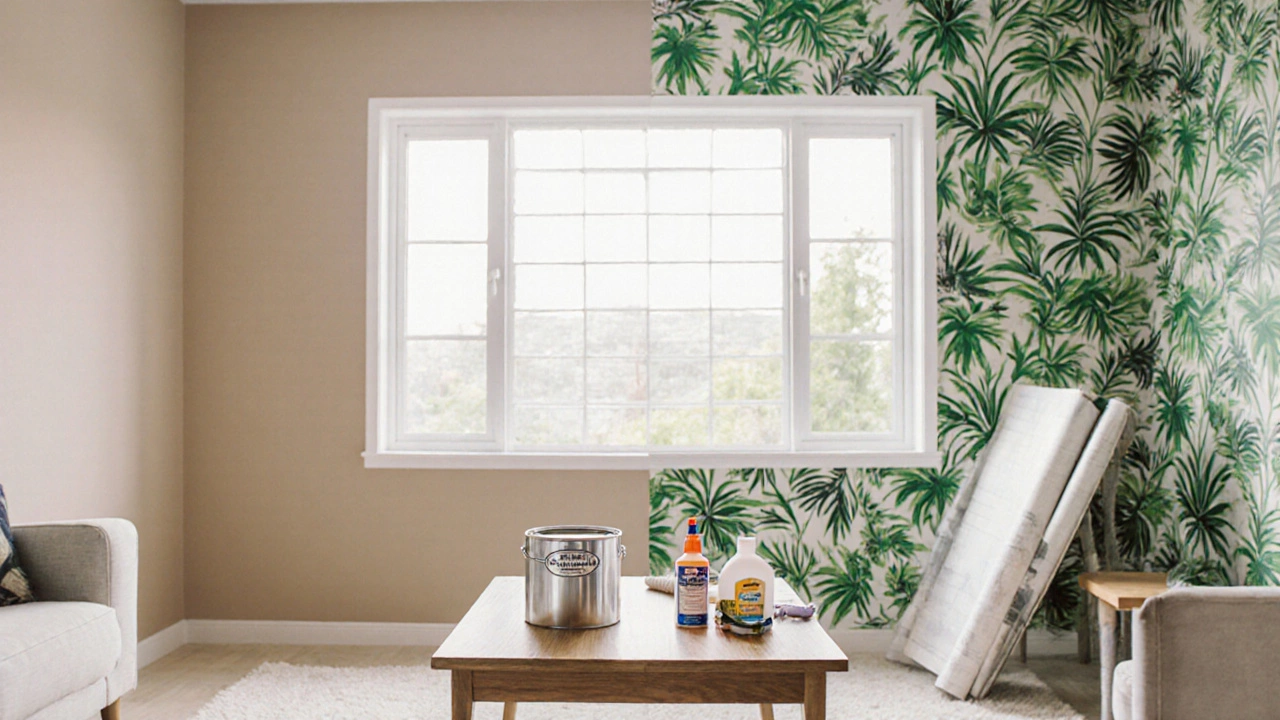Wallpaper vs Paint Cost Calculator
Estimate Your Project Costs
If you're stuck deciding whether wallpaper is good or bad for your walls, you're not alone. Homeowners, renters, and designers all wrestle with this question when a room needs a fresh look. Below you’ll find the facts you need to pick the right covering for your space.
Key Takeaways
- Wallpaper adds pattern, texture, and durability that paint often can’t match.
- High‑VOC adhesives or poorly ventilated rooms can affect indoor air quality.
- Proper prep and the right adhesive are crucial to avoid wall damage.
- Paint remains cheaper and easier to update, but may need frequent touch‑ups.
- Both options can be sustainable if you choose low‑VOC products and recycled materials.
What Exactly Is Wallpaper?
Wallpaper is a flexible material-usually paper, vinyl, or fabric-that is applied to interior walls using adhesive. It comes in rolls, pre‑pasted sheets, or peel‑and‑stick panels. Modern wallpaper can mimic natural textures like wood, brick, or silk, and many designs are washable.
The Upsides of Wallpaper
When used correctly, wallpaper offers several advantages over paint:
- Design depth: Patterns, murals, and textured finishes add visual interest that a single coat of paint can’t achieve.
- Durability: High‑quality vinyl or fabric‑backed wallpapers resist scuffs, moisture, and fading for 10‑15 years.
- Conceals imperfections: Thick layers can hide minor wall cracks or uneven plaster.
- Easy cleaning: Many contemporary options are scrub‑able, making them ideal for kitchens and kids’ rooms.
- Acoustic benefits: Fabric‑based wallpapers can dampen echo in large spaces.

Potential Drawbacks
Wallpaper isn’t a magic bullet. Here are the common downsides:
- Cost: Premium designs and professional installation can run $8‑$12 per square foot, higher than paint.
- Installation complexity: Precise measurements, surface prep, and adhesive handling require skill.
- Moisture risk: In high‑humidity areas, water can seep behind the paper, leading to peeling or mold.
- Removal pain: Stripping wallpaper often damages the underlying wall, especially if the surface wasn’t primed.
- VOC exposure: Some adhesives emit volatile organic compounds, affecting indoor air quality.
How Wallpaper Interacts With Walls
Wall is the structural substrate that carries any covering. Its condition dictates how well wallpaper adheres.
Two technical factors matter most:
- Moisture: Moisture can weaken adhesive bonds. In bathrooms or basements, choose moisture‑resistant vinyl or wait for proper ventilation before applying.
- VOC levels: Many adhesives release VOC compounds. Low‑VOC or water‑based glues reduce health risks, especially in homes with children or asthma sufferers.
Wallpaper vs Paint: Quick Comparison
| Attribute | Wallpaper | Paint |
|---|---|---|
| Cost per sq ft (average) | $8‑$12 | $1‑$3 |
| Installation time | 1‑2 days (professional) | 4‑6 hours (DIY) |
| Durability | 10‑15 years (washable) | 5‑7 years (mid‑range) |
| Design flexibility | Pattern, texture, mural | Color, sheen, finish |
| Moisture resistance | High (vinyl), moderate (paper) | Low - prone to peeling |
| Impact on indoor air | Depends on adhesive (VOC) | Low‑VOC paints available |
Installation: DIY or Pro?
Two pathways exist:
- DIY Installation works well for peel‑and‑stick or pre‑pasted rolls. You’ll need a clean wall, a sharp utility knife, a smoothing brush, and patience.
- Professional Installation is recommended for large mural projects, heavy vinyl, or rooms with irregular surfaces. Pros bring tools like seam rollers and edge‑trimming equipment, plus experience with substrate preparation.
Key prep steps (whether DIY or pro):
- Repair cracks and sand rough spots.
- Apply a primer or wall‑seal to create an even surface.
- Choose the right Adhesive. Water‑based glues are low‑VOC; heavy‑duty vinyl may need solvent‑based glue.

Maintenance and Longevity
Modern wallpaper often bears a washable coating. Light dusting with a soft cloth keeps it looking fresh. For stains, a damp sponge and mild detergent usually do the trick. In high‑traffic zones, consider a clear protective finish.
When the finish fades or peels, you have two options:
- Touch up a small area with matching wallpaper strips.
- Remove the whole sheet and replace it-best done by a professional to avoid wall damage.
When Wallpaper Makes Sense
Here are scenarios where wallpaper shines:
- Feature walls: A bold pattern can become the room’s focal point without overwhelming the space.
- Children’s rooms: Washable designs handle crayons and spills.
- Historic homes: Reproductions of period paper can preserve heritage aesthetics.
- Acoustic improvement: Fabric‑backed options reduce echo in open‑plan areas.
Conversely, stick with paint if you expect frequent color changes, work with a tight budget, or need a quick refresh in a damp environment.
Final Verdict
Wallpaper isn’t inherently good or bad; it’s a tool that works best when matched to the room’s demands, the wall’s condition, and your willingness to invest in proper installation. When you choose low‑VOC adhesives, prime the wall, and pick a design that suits your lifestyle, wallpaper can out‑perform paint in durability, style, and even acoustic comfort. If flexibility and low cost dominate your checklist, paint remains the go‑to solution.
Frequently Asked Questions
Can wallpaper cause mold?
Mold only forms if moisture gets trapped behind the covering. Using moisture‑resistant vinyl and ensuring the wall is dry before installation prevents mold growth.
Is wallpaper safer for indoor air than paint?
Both can be safe if you choose low‑VOC products. Traditional solvent‑based adhesives release more VOCs than water‑based glues, while many modern paints are formulated to be low‑VOC as well.
How long does wallpaper typically last?
High‑quality vinyl or fabric‑backed wallpaper can last 10‑15 years with proper care. Paper‑based options may need replacement after 5‑7 years.
Can I put wallpaper in a bathroom?
Yes, but pick a moisture‑resistant vinyl or waterproof fabric. Ensure the bathroom is well‑ventilated and seal the edges properly.
Is it cheaper to do wallpaper yourself?
DIY saves on labor, but you still pay for materials and tools. For simple peel‑and‑stick sheets, DIY can be $2‑$4 per sq ft cheaper than hiring a pro.
